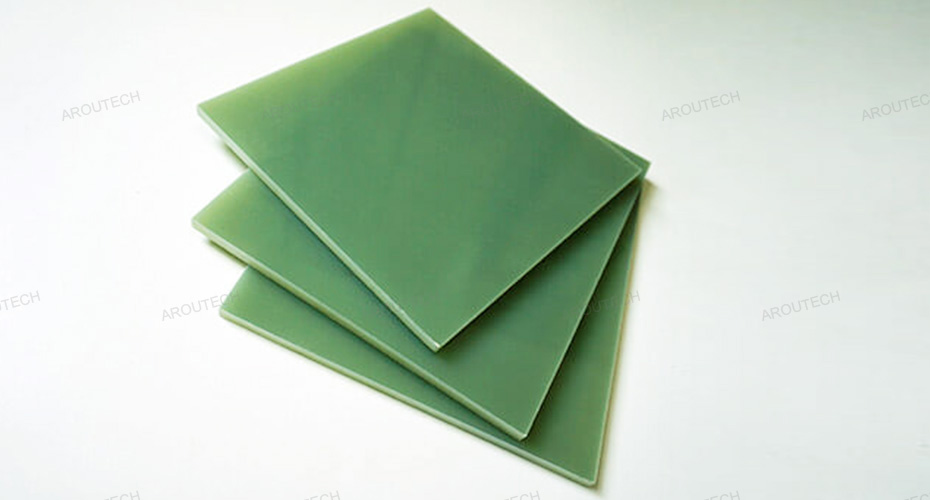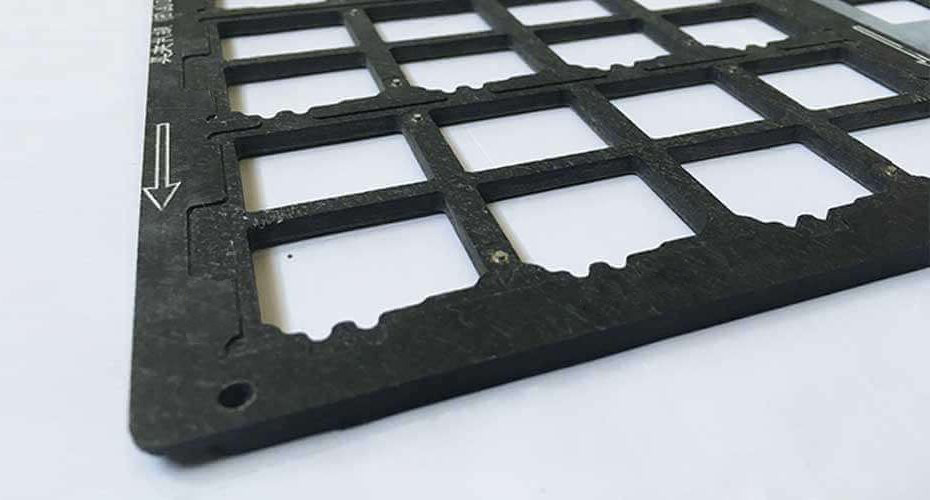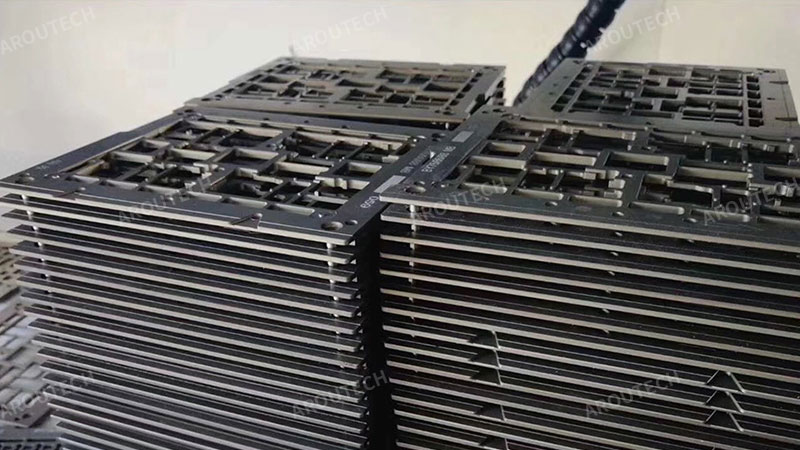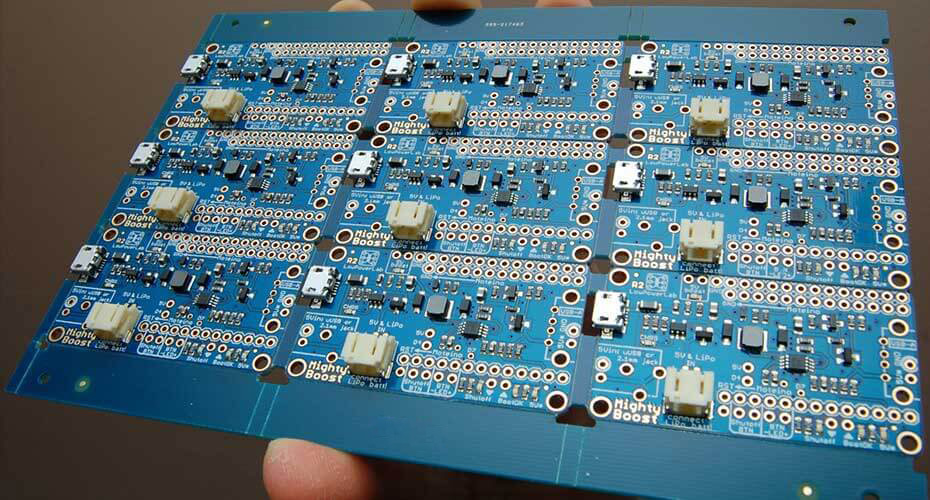In the world of engineering and manufacturing, material selection is a critical decision. The right material choice profoundly impacts a project’s performance, durability, and overall success. One such high-performance material frequently specified is Garolite G10, also known as G10 glass epoxy. Known for its impressive array of properties, it’s a popular and reliable choice among engineers, designers, and industry professionals.
Garolite G10 is a high-pressure thermosetting industrial laminate composed of a continuous woven E-glass fabric (electrical grade glass) impregnated and bonded with an epoxy resin binder. This specific composition, cured under heat and pressure, yields excellent electrical insulating properties, very low moisture absorption, high mechanical strength, and a favorable strength-to-weight ratio. These characteristics make it a go-to material in various demanding engineering fields.
But what truly distinguishes this robust composite material from other laminates? How does it compare functionally to its flame-retardant counterpart, FR4 laminate? And what are its most common and effective applications within the engineering sector?
This comprehensive guide aims to answer these questions. It delves into the composition, key characteristics, and typical applications of this versatile laminate, providing a thorough understanding of what makes Garolite G10 stand out. Whether you’re an experienced engineer, a materials scientist, or a product designer, this guide will equip you with the essential knowledge to make informed decisions regarding G10 material selection for your projects.
What is Garolite G10?
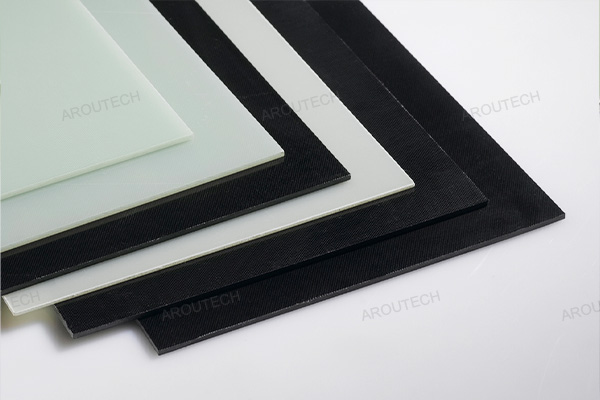
Garolite G10 is a high-performance composite material recognized for its exceptional performance and reliability, particularly in applications requiring electrical insulation and mechanical toughness. Created through a high-pressure lamination process, it stands as a premium-grade industrial laminate.
Its core components are multiple layers of continuous woven E-glass fabric, known for its good electrical insulating properties and strength, and a high-quality epoxy resin system that binds these layers together. This combination results in outstanding electrical insulating capabilities (high dielectric strength), significant mechanical strength (including good tensile, compressive, and flexural strength), and excellent dimensional stability, making it a preferred material in demanding applications.
Key characteristics include:
- High strength-to-weight ratio, offering robust performance without excessive bulk.
- Excellent electrical insulation properties, maintained even in humid conditions due to low moisture uptake.
- Good thermal resistance, typically suitable for continuous operation at temperatures up to around 130°C (266°F).
- Resistance to a wide range of common chemicals and solvents.
- Extremely low moisture absorption, which is crucial for maintaining stable electrical and mechanical properties over time.
These attributes contribute significantly to its dimensional stability, enabling G10 laminate to maintain its shape and critical properties under diverse environmental conditions, including variations in temperature and humidity. This consistent performance is why it remains a sought-after choice for engineers across multiple industries.
The Composition and Properties of This Composite Material
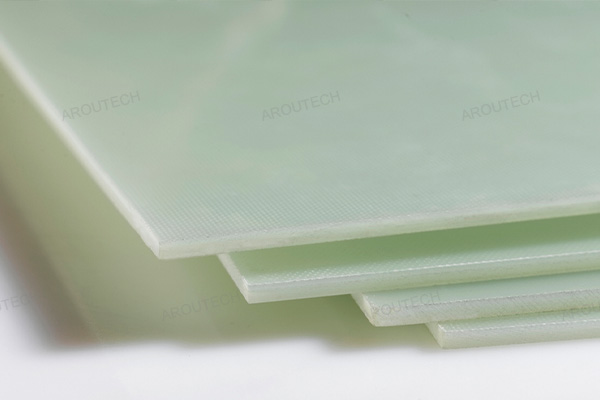
The structure of Garolite G10 laminate is meticulously engineered. It consists primarily of layers of woven E-glass (electrical grade) fabric, which provides the material’s strength and reinforcement, bonded together with a cured epoxy resin matrix. This resin not only binds the glass fibers but also contributes to the material’s chemical resistance and electrical properties. The lamination occurs under high pressure and elevated temperature, ensuring a dense, void-free composite.
A prominent feature is its high strength-to-weight ratio. This means G10 can withstand significant mechanical loads while being relatively lightweight, an advantage over many traditional metallic materials. Its excellent dimensional stability, largely a result of its very low moisture absorption (typically below 0.15% by NEMA LI 1 standards), ensures that components made from G10 resist warping or changing dimensions when exposed to moisture or fluctuating humidity levels.
In addition to its impressive mechanical strength, G10 excels as an electrical insulator. It exhibits high dielectric strength, meaning it can withstand high voltages without breaking down, and has a low dissipation factor, indicating minimal electrical energy loss when used in AC applications. These properties make it invaluable for applications requiring electrically non-conductive barriers or structural components in electrical assemblies.
Good chemical resistance further enhances its durability in challenging environments, allowing it to withstand exposure to many oils, solvents, and cleaning agents. Its stability at moderately high temperatures ensures it can retain mechanical integrity within its specified continuous operating temperature range.
An overview of its key properties includes:
- Impressive mechanical strength (high tensile, flexural, and compressive values).
- Good thermal resistance, with a continuous operating temperature often cited around 130°C.
- Superb electrical insulation properties, including high dielectric strength and surface resistivity.
- Durable against many chemical substances and solvents.
- Minimal moisture absorption, contributing to stable electrical and mechanical performance.
These qualities make Garolite G10 a versatile and reliable choice for applications ranging from intricate electronic components and insulators to robust structural elements in industrial machinery and aerospace engineering.
Garolite G10 vs. FR4 Laminate: Understanding the Differences
Both Garolite G10 and FR4 laminate are popular glass-epoxy composites widely used in the industrial and electronics sectors. They share a similar base composition of woven glass fabric and epoxy resin. However, they differ in one critical aspect: flame retardancy. This distinction is crucial for correct material selection based on application requirements.
The primary difference lies in their flame retardant properties. FR4 (which stands for Flame Retardant, Grade 4) contains brominated flame-retardant additives integrated into the epoxy resin system. These additives allow FR4 to meet specific flammability standards, most commonly UL94V-0, which means it will self-extinguish within a short time after an ignition source is removed. Garolite G10, by contrast, does not contain these flame-retardant additives and is therefore not rated for flame resistance under such standards.
Functionally, G10 and FR4 share many core properties. Both materials exhibit excellent electrical insulating qualities, high mechanical strength, low moisture absorption, and good dimensional stability. However, G10’s lack of inherent flame resistance limits its usage in applications where flammability codes or safety standards mandate self-extinguishing materials. For instance, most printed circuit boards (PCBs) require FR4 due to these safety regulations.
The mechanical properties of G10 laminate are generally very similar to, and in some specific aspects (like flexural strength under certain conditions), can slightly exceed those of FR4. Both are suitable for demanding mechanical applications, but the choice often hinges on the flame retardancy requirement.
Here’s a quick comparative breakdown:
| Feature | Garolite G10 | FR4 Laminate |
|---|---|---|
| Base Composition | Woven E-Glass Fabric, Epoxy Resin | Woven E-Glass Fabric, Epoxy Resin |
| Flame Retardancy | No (Not Rated) | Yes (Typically meets UL94V-0) |
| Mechanical Strength | High | High (Very Similar to G10) |
| Electrical Insulation | Excellent | Excellent |
| Moisture Absorption | Very Low | Very Low |
| Primary Use Case | Mechanical, Electrical (No FR needed) | PCBs, Electrical (FR Required) |
Choosing between G10 and FR4 involves a clear understanding of the application’s specific requirements. If certified flame retardancy is necessary, FR4 is the standard and appropriate choice. If flame retardancy is not a critical factor, G10 offers nearly identical performance characteristics and can be a more economical option in some cases.
Applications of Garolite G10 in Engineering
Garolite G10 shines across numerous engineering applications due to its versatile property profile. Its adaptability spans several industries, showcasing its functionality where high strength, excellent electrical insulation, dimensional stability, and good machinability are paramount. Engineers consistently choose G10 laminate for reliable performance in challenging conditions where flame retardancy is not a mandated requirement.
In the electronics and electrical sectors, G10’s outstanding electrical insulation properties make it ideal for terminal boards, busbar insulators, insulating washers and spacers, switchgear components, and structural supports within electrical enclosures. It effectively prevents unwanted conductive paths, protecting sensitive components and ensuring safe operation. While FR4 is dominant for PCBs, G10 can be used for test fixtures or specialized boards where FR rating is not needed.
In aerospace, Garolite G10 is utilized in constructing lightweight yet strong structural components, jigs, fixtures, and insulating elements. Its good strength-to-weight ratio contributes to fuel efficiency without compromising structural integrity.
Marine industries also benefit from its qualities. The laminate’s very low moisture absorption and resistance to saltwater make it suitable for various components used in boat construction and offshore equipment, provided it’s not in constant direct UV exposure without protection.
Automotive engineers utilize this composite for various mechanical parts, test fixtures, insulating components in electric vehicles, and high-performance applications where its robust nature is beneficial.
Industrial applications are extensive, including wear pads, gear wheels, precision machined parts, structural supports, jigs, fixtures, and high-strength insulating parts in machinery and manufacturing equipment. Laboratories and medical facilities sometimes select G10 for equipment components due to its machinability, cleanliness, and resistance properties, though specific biocompatibility testing is needed for direct medical contact.
Key uses include:
- Electrical insulators, terminal boards, and busbar supports
- Aerospace structural components, jigs, and fixtures
- Marine components (with UV consideration)
- Automotive insulators, test fixtures, and high-strength parts
- Industrial jigs, fixtures, wear pads, and gears
- High-strength mechanical components requiring electrical insulation
- Precision machined parts for various equipment
Each application leverages the unique combination of properties offered by G10 composite material, making it indispensable in many areas of modern engineering.
Machining and Fabrication of Garolite G10
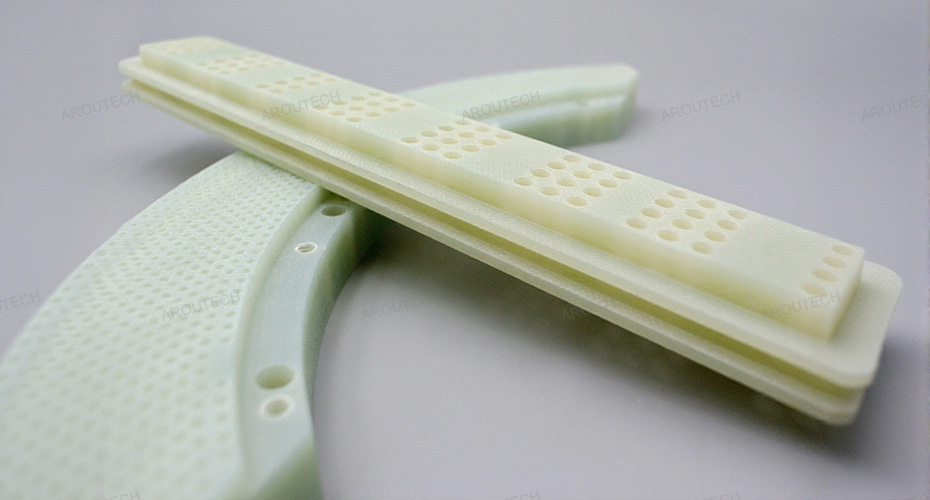
Machining Garolite G10 requires precision, appropriate tooling, and specific techniques due to its hardness and the abrasive nature of its glass fiber reinforcement. While known for its strength, it machines well, often compared to machining dense hardwoods or some non-ferrous metals, but with key differences.
Fabrication processes can include cutting (sawing, waterjet), drilling, milling, turning, and tapping using standard metalworking machinery. However, using sharp, wear-resistant tools, such as carbide-tipped or diamond-coated tools, is essential. These tools maintain their cutting edge longer against the abrasive glass fibers, achieve cleaner cuts, minimize tool wear, and help prevent delamination or splintering of the material.
Safety is critical when working with G10 laminate. The machining process generates fine glass and resin dust, which is abrasive and can be a respiratory and skin irritant. Proper local exhaust ventilation, effective dust collection systems at the point of machining, and appropriate personal protective equipment (PPE) – including safety glasses, gloves, and NIOSH-approved respirators – are highly recommended to protect operators.
The laminate’s rigidity and dimensional stability allow for machining to tight tolerances, enabling the creation of intricate part designs while maintaining material integrity. This makes it suitable for producing both simple shapes and complex, high-precision components.
Here are machining considerations to keep in mind:
- Utilize sharp, wear-resistant (carbide, PCD, or diamond) tools for best results and tool life.
- Ensure robust workpiece clamping to prevent vibration and movement during machining.
- Employ moderate cutting speeds and feed rates, adjusted based on the specific operation and tool, to prevent overheating and excessive tool wear.
- Implement effective dust control and extraction systems at the source.
- Consider using coolants (such as air mist or, in some cases, liquid coolants compatible with epoxy) to manage heat, improve surface finish, and help control dust.
- Design parts to minimize sharp internal corners where possible to reduce stress concentrations and potential for cracking.
- Deburr edges carefully to remove any fine splinters.
The ability to achieve precise machining makes G10 laminate a material of choice for engineers seeking custom components requiring high strength, dimensional stability, and excellent electrical insulation across various industries.
Advantages of Using This Fiberglass Laminate in Industrial Projects
Garolite G10 provides numerous distinct benefits in industrial and engineering applications. Its favorable strength-to-weight ratio makes it an ideal selection for projects requiring durability and stiffness without the penalty of excess weight, often distinguishing it from metallic alternatives like aluminum or steel in specific scenarios.
The laminate’s exceptional electrical insulating properties are a major asset. Its high dielectric strength, low dielectric loss, and high insulation resistance make it a primary choice for components in electrical equipment and electronic assemblies where preventing current flow and ensuring electrical integrity are critical for safety and proper function.
Versatility also characterizes this composite. It maintains its key properties under a range of environmental conditions, including humidity, and exhibits good resistance to mechanical stress, moderate temperature fluctuations, and exposure to many common industrial chemicals and solvents.
Key advantages include:
- High mechanical strength (tensile, compressive, flexural, and impact).
- Exceptional electrical insulation characteristics (high dielectric strength, low loss factor, high volume and surface resistivity).
- Excellent dimensional stability, primarily due to its very low moisture absorption.
- Good resistance to a broad range of chemicals and heat (within its specified operating limits).
- Readily machinable to precise specifications and complex geometries.
- Good wear resistance in certain applications.
These factors position G10 laminate as a reliable, versatile, and often cost-effective option for many demanding applications. Its consistent performance provides engineers with confidence when utilizing it for applications ranging from critical electrical insulators and high-load mechanical parts to precision components in scientific instruments.
Limitations and Considerations When Working with Garolite G10
While Garolite G10 offers many significant advantages, it’s essential for designers and engineers to recognize certain limitations to ensure successful application and longevity. One notable consideration is its relatively poor resistance to ultraviolet (UV) radiation. Prolonged exposure to direct sunlight can cause surface degradation, discoloration, and embrittlement, affecting its long-term performance in outdoor applications unless it is coated, painted, or otherwise protected from UV rays.
Its impact strength, while good for a rigid laminate, is generally lower compared to its high tensile and flexural strengths. This makes it less suitable for applications expected to withstand significant, sudden impact forces without careful design considerations, such as incorporating thicker sections, reinforcement, or support structures.
Chemical resistance is good but not universal. While G10 withstands many common solvents, oils, and weak acids/alkalis, it may be attacked or degraded by strong oxidizing acids, strong alkalis, and certain aggressive organic solvents, especially at elevated temperatures. Therefore, a careful assessment of the specific chemical environment and exposure conditions is crucial before specification.
Key considerations include:
- UV sensitivity limits unprotected long-term outdoor utility.
- Lower impact strength compared to some engineering thermoplastics or metals.
- Vulnerability to specific aggressive chemicals and prolonged exposure to hot water/steam.
- Potential for delamination if improperly machined (e.g., with dull tools or aggressive feeds) or if subjected to excessive localized stress, particularly at edges or holes.
- It is not inherently flame retardant; FR4 should be specified if a UL94V-0 or similar flame rating is required.
- The abrasive nature of glass fibers during machining requires appropriate tooling and dust control.
Understanding these aspects helps engineers make informed decisions. Proper design, careful material selection based on environmental exposure, appropriate handling, and correct machining practices are key to maximizing the utility and lifespan of G10 components in projects.
Environmental Impact and Safety Guidelines for Garolite G10
While a highly versatile engineering material, Garolite G10, being a thermoset plastic composite, presents some environmental considerations. It is non-biodegradable, meaning that at the end of its service life, responsible disposal methods are necessary. These typically involve landfilling according to local industrial waste regulations, or potentially waste-to-energy incineration processes where available and permitted. Recycling options for thermoset composites like G10 are currently very limited and not widely commercially viable.
Safety during machining and handling is paramount. As previously emphasized, the fine fiberglass and resin dust generated during cutting, drilling, grinding, or sanding operations is abrasive and can pose respiratory irritation, skin irritation, and eye hazards. The use of appropriate personal protective equipment (PPE) is essential. This includes NIOSH-approved respirators or dust masks suitable for fine particulates, safety glasses or goggles, and gloves. Effective local exhaust ventilation (LEV) or dust collection systems directly at the machining points are crucial to capture dust at its source and maintain a safe working environment.
Follow these guidelines for safety and environmental care:
- Implement effective dust collection and extraction systems at all machining stations.
- Mandate and ensure the correct use of appropriate personal protective equipment (PPE) by all personnel handling or fabricating G10.
- Dispose of G10 scrap, offcuts, and collected dust in accordance with local, state, and federal environmental regulations for industrial solid waste.
- Minimize material waste through efficient nesting of parts during cutting operations and careful planning.
- Maintain clean work areas to prevent accumulation of dust.
Adhering to these practices helps mitigate health risks for workers and promotes more responsible manufacturing processes. Balancing the functional benefits of G10 material with conscientious handling, fabrication, and disposal strategies supports both project goals and broader environmental stewardship.
Conclusion: Why Choose Garolite G10 for Your Engineering Needs?
Garolite G10 consistently stands out in the landscape of engineering materials due to its exceptional and well-balanced combination of high mechanical strength, excellent electrical insulation, very low moisture absorption, and superior dimensional stability. These core properties make it a top-tier choice for engineers and designers seeking reliable, durable, and high-performing materials for a wide array of demanding applications, particularly where flame retardancy is not a primary operational or regulatory requirement. Its performance characteristics offer superior value and dependability across diverse industrial sectors.
When selecting materials for critical engineering projects, G10 composite laminate provides a unique blend of strength, stiffness, electrical resistance, thermal stability (within its range), and excellent machinability. This makes it highly versatile and suitable for applications ranging from intricate electrical insulators and precision mechanical components to robust structural supports and specialized tooling.
Consider Garolite G10 for your engineering endeavors where its specific advantages align with your project’s performance criteria and operational environment. Ensure your designs benefit from its proven long-term reliability and precision capabilities. Making an informed material choice like G10 supports both innovation and dependability in engineering design, leading to robust and efficient solutions.
References
-
- Printed Circuit Board (PCB): Wikipedia contributors. "Printed circuit board." Wikipedia, The Free Encyclopedia.
-
- Thermosetting Polymer: Wikipedia contributors. "Thermosetting polymer." Wikipedia, The Free Encyclopedia.
-
- Epoxy Resin: Wikipedia contributors. "Epoxy." Wikipedia, The Free Encyclopedia.
-
- Composite Material: Wikipedia contributors. "Composite material." Wikipedia, The Free Encyclopedia.
-
- Dielectric Strength: Wikipedia contributors. "Dielectric strength." Wikipedia, The Free Encyclopedia.
-
- UL94 Flammability Standard: Wikipedia contributors. "UL94." Wikipedia, The Free Encyclopedia.
-
- E-Glass Fiberglass: AC Plastics Inc. "E-Glass Fiberglass – What Is It?" AC Plastics Inc. Information Center.

